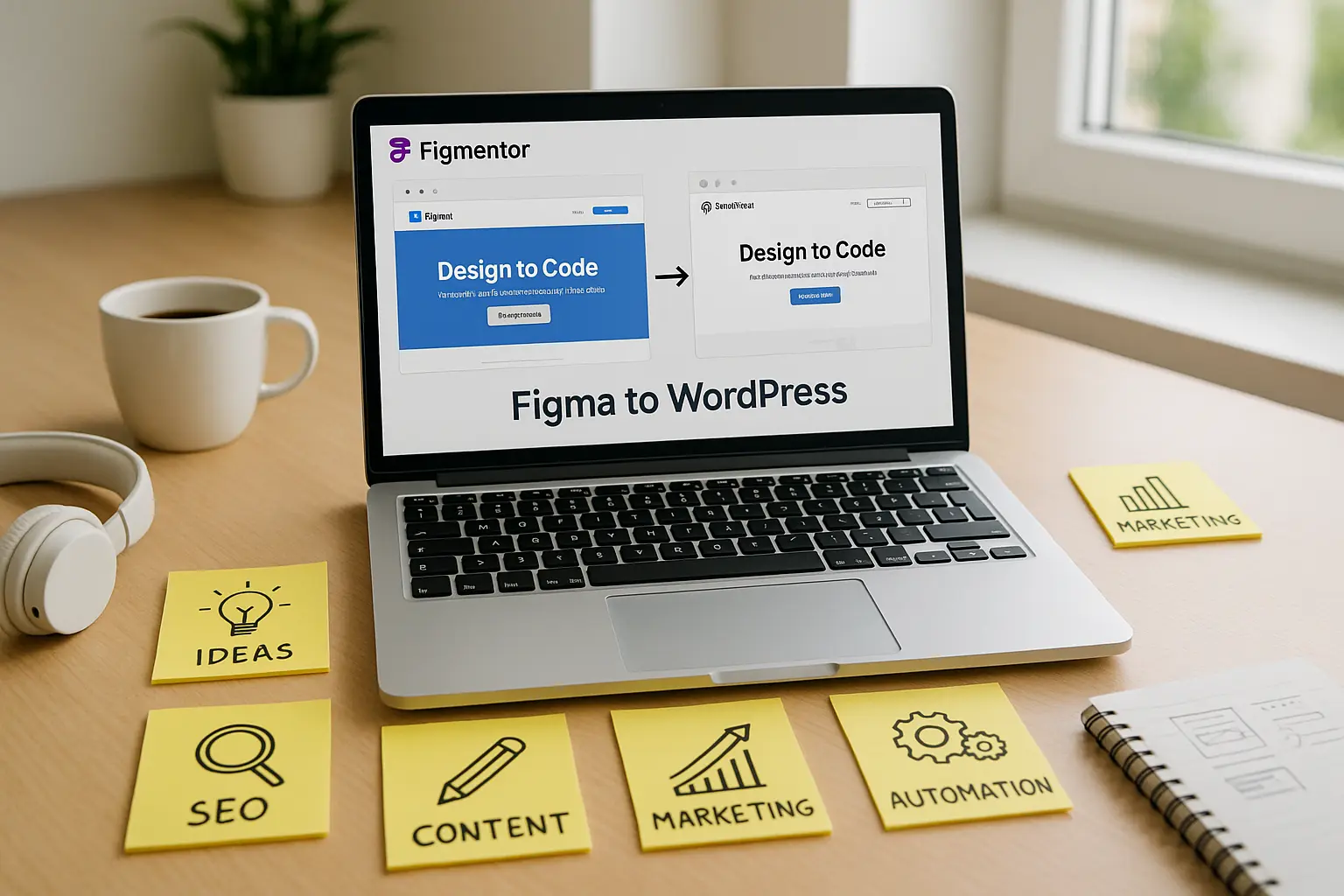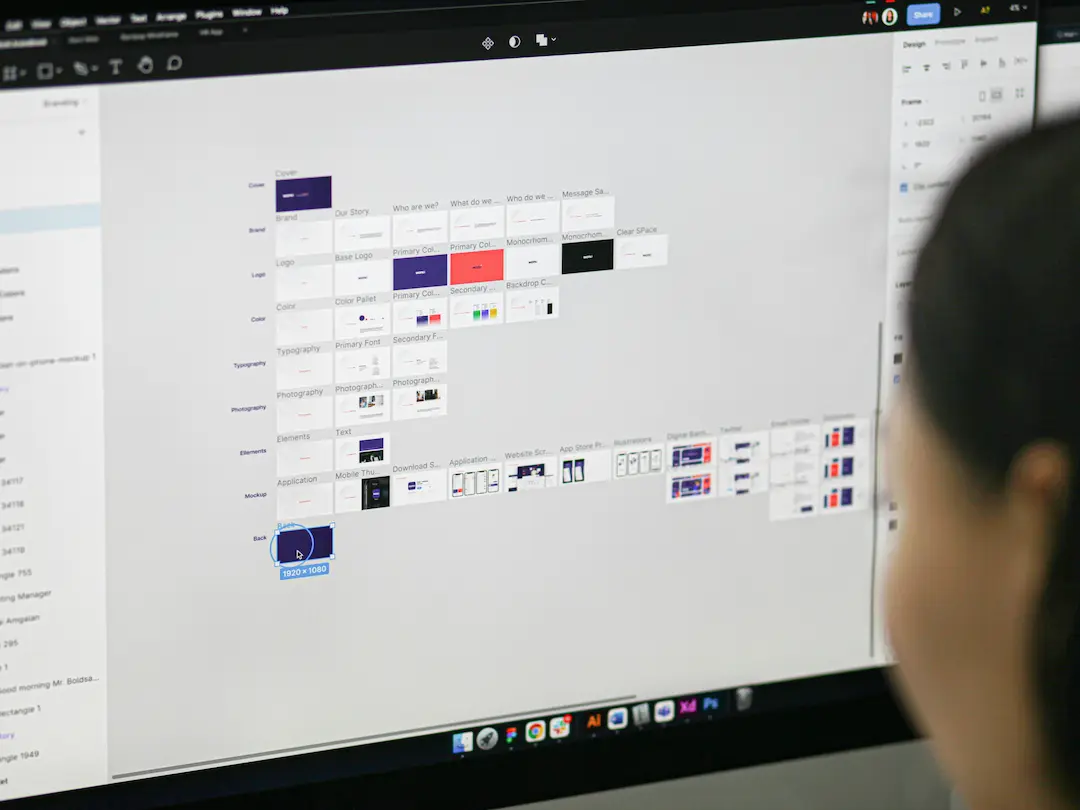The Cost of Manual Figma to Elementor Workflows
For web designers and creative agencies, using Figma for design and Elementor for site building is common. But bridging the gap between the two tools manually? That’s a serious time sink.
Every project begins with a beautiful, pixel-perfect Figma layout. But when it’s time to translate that design into a working site in Elementor, the trouble starts.
- You’re recreating every layout component-section by section, pixel by pixel.
- You need to constantly reapply spacing, alignments, typography, and visual elements.
- Worst of all, the repetition saps your creative energy, turning exciting design into tedious production.
Multiply this across several projects, and you’re burning dozens of hours monthly-time that could be spent refining designs, acquiring clients, or simply taking a break.
The Core Problems Designers Face
Lost Time and Momentum
Designers waste over 10 hours per project rebuilding what already exists in Figma. That’s nearly 30% of your timeline gone to mechanical labor.
Error-Prone Workflows
Manual processes leave room for inconsistency-spacing off by 10px, fonts not matching, or missing mobile breakpoints. It results in extended QA sessions and client feedback loops.
Redundancy Across Projects
You redo the same patterns-hero sections, grid systems, CTA buttons-again and again. There’s no scaling in sight.
Enter Figmentor – The Game-Changer
Figmentor is a powerful automation tool that converts Figma designs directly into Elementor-ready JSON templates. No coding. No rebuilding. Just import and customize.
Now enhanced with Figmentor AI, the platform understands:
- Your design structure
- Layout hierarchies
- Content blocks
Then it generates a clean, lightweight Elementor export file-all in seconds.
Manual Time Breakdown vs. Figmentor Efficiency
Where Time Gets Lost
| Task | Avg. Time Spent Manually |
|---|---|
| Hero Section | 1 hour |
| Layout Structuring | 2 hours |
| Spacing & Typography | 1.5 hours |
| Images, Buttons, Icons | 1 hour |
| Responsive Adjustments | 2 hours |
| QA & Revisions | 2+ hours |
| Total Time per Project | 10+ hours |
How Figmentor Solves This
- Instant JSON Export: No rebuild, just import into Elementor
- Auto Layout Detection: Sections and containers mapped via AI
- Responsive by Default: Layouts come mobile-ready
- Clean Codebase: Minimal blocks, easier editing
That 10-hour effort? Reduced to minutes.
How Figmentor Works – Step-by-Step
- Upload Your Figma File: Share a public Figma URL
- Figmentor AI Analyzes the Design: Detects containers, elements, typography
- Download JSON File: Get a clean Elementor-ready template
- Import in Elementor: Add it directly into your page or template
No plugins. No manual slicing. Just design → deploy.
Advantages of Figmentor Over Manual Methods
- Time-Saving: Reclaim hours per project
- Accuracy: Exact spacing, fonts, and layouts every time
- Scalability: Handle more projects without hiring extra hands
- Mobile-First Design: Fully responsive outputs
- Customizable: Use as a starting point, then tweak freely
Who Benefits the Most from Figmentor
- Freelancers juggling multiple clients
- Creative Agencies needing fast turnarounds
- UI/UX Designers who want to skip technical builds
- No-Code Builders seeking a bridge between design and delivery
Proven Results from Real Users
Designers and agencies using Figmentor report:
- 50% faster project completion
- Same-day design-to-live website
- Higher client satisfaction
- Increased profit margins
Some teams cut project costs by 30% and doubled their client capacity.
Exclusive Offer – Try Figmentor with 55% OFF
To celebrate the launch of Figmentor AI, we’re offering:
🔓 55% OFF for all new users 🧠 Use code: FIGELAI 🔗 Visit Figmentor
Save time. Earn more. Focus on what you love.
What’s Next for Figmentor
The team behind Figmentor is building fast. Here’s what’s coming:
- AI for different design systems and patterns
- Advanced component detection (forms, testimonials, CTAs)
- Native Figma plugin for direct conversion
- Support for Elementor Pro widgets
Final Thoughts
Manual conversion from Figma to Elementor is outdated.
Figmentor gives you back 10+ hours per project, allowing you to shift your focus from rebuilding layouts to innovating designs and growing your business.
Whether you’re a solo freelancer or a busy agency, this tool can supercharge your workflow. 👉 Try it now: https://figmentor.io
FAQs About Figmentor and Elementor
Q1. What is Figmentor? Figmentor is a tool that converts Figma designs into Elementor templates, cutting down manual work and speeding up site delivery.
Q2. Do I need to install anything? No, Figmentor works online. Simply paste your Figma link and download your Elementor-ready JSON file.
Q3. Is it compatible with Elementor Pro? Yes, and support for more Pro widgets is being added soon.
Q4. Can I use it for client work? Absolutely! Figmentor is built with freelancers and agencies in mind.
Q5. Is there a free trial available? Yes, there are free trials and a discount offer (use code FIGELAI).
Q6. Does Figmentor handle mobile responsiveness? Yes, templates are mobile-friendly right out of the box.




